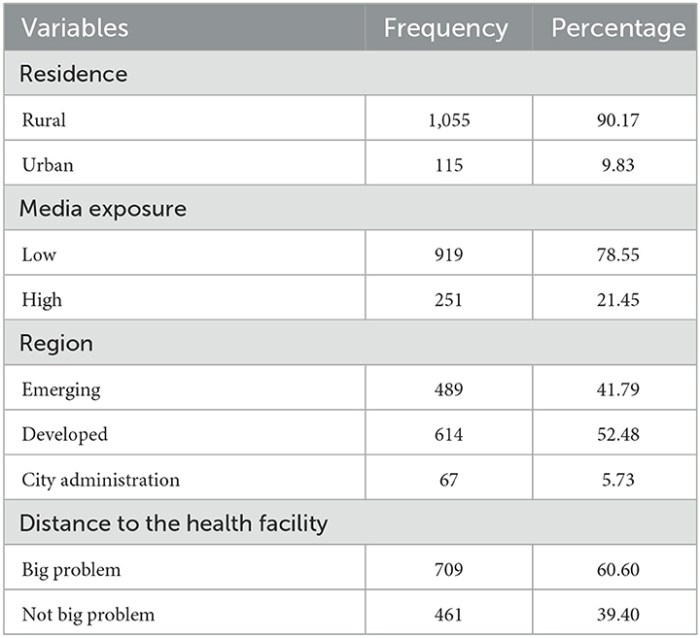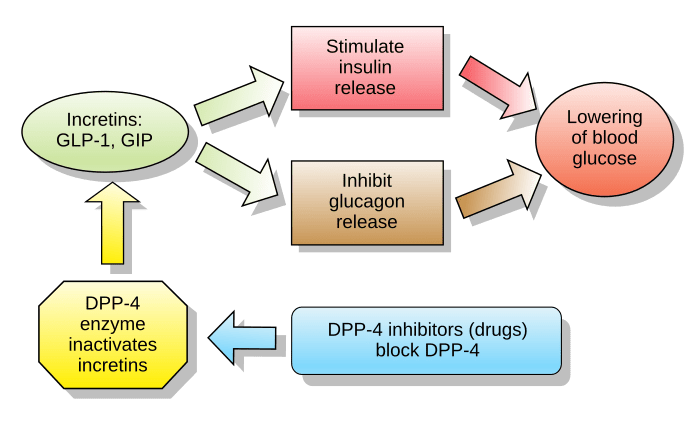Magnesium oil on feet is gaining popularity for its potential to soothe aches, heal dry skin, and improve circulation. This in-depth look explores the purported benefits, potential risks, scientific evidence, user experiences, and safety precautions surrounding this topical treatment. We’ll also compare it to other foot care options and provide expert insights.
Magnesium oil, a topical solution, is claimed to offer various benefits for foot health. It’s often applied directly to the skin, and proponents suggest it can address issues like pain, dryness, and circulation problems. This comprehensive guide will analyze the evidence behind these claims.
Introduction to Magnesium Oil on Feet
Magnesium oil, often touted as a natural remedy, is a liquid solution containing magnesium chloride. Proponents claim it offers various benefits, ranging from soothing muscle aches to improving skin health. The oil is typically absorbed into the skin, and its purported therapeutic effects are attributed to the magnesium ions it delivers. It’s important to note that while anecdotal evidence exists, scientific research supporting many claims is limited.The typical application method involves gently massaging a small amount of magnesium oil onto the feet, ensuring even distribution.
The oil is usually left on the skin for a period of time, sometimes as short as a few minutes, before being wiped away. The amount of time depends on individual tolerance and desired effect.People use magnesium oil on their feet for a variety of reasons. Many seek relief from foot pain, including muscle soreness, stiffness, or even plantar fasciitis.
Some use it to address dryness or other skin issues, believing it can moisturize and soften the skin. The idea that magnesium oil can help with overall well-being, by increasing magnesium levels in the body, is another popular reason.
Potential Benefits for Specific Conditions
While more research is needed, some users report benefits for specific foot conditions. For example, some individuals find magnesium oil helpful in managing mild to moderate pain associated with plantar fasciitis. The purported ability to soothe muscle soreness and stiffness in the feet could also be beneficial for athletes or those with active lifestyles. It’s important to note that these are anecdotal reports and should not replace professional medical advice.
Comparison to Other Foot Care Products
| Product | Mechanism of Action | Potential Benefits | Potential Drawbacks |
|---|---|---|---|
| Magnesium Oil | Topical application of magnesium chloride, purportedly allowing magnesium ions to penetrate the skin. | Potential relief from muscle pain, dryness, and skin issues. May help with plantar fasciitis symptoms. | Limited scientific evidence; potential for skin irritation in some individuals; not a substitute for professional medical care. |
| Moisturizing Creams/Lotions | Hydrate and soften the skin. | Improved skin moisture, reduced dryness, and potential relief from minor skin irritations. | May not address underlying pain or muscle issues; can be greasy or leave a residue. |
| Pain Relief Creams (e.g., containing menthol or capsaicin) | Provide cooling or warming sensations, sometimes with analgesic effects. | Temporary relief from pain and inflammation. | May not address the underlying cause of pain; potential for skin irritation or allergic reactions. |
This table provides a basic comparison, highlighting the differences in how these products work and their potential effects. It is crucial to consult with a healthcare professional for appropriate advice on managing foot pain or other medical concerns.
Potential Benefits
Magnesium oil, applied topically to the feet, may offer various potential benefits. While more research is needed to fully understand its effects, anecdotal evidence and some preliminary studies suggest positive outcomes in certain areas. The purported benefits are often linked to magnesium’s role in various bodily functions, including muscle relaxation, nerve function, and hydration. It’s crucial to remember that these are potential benefits, and individual results may vary.Applying magnesium oil to the feet can potentially address various issues, from discomfort and dryness to circulatory concerns.
It’s important to approach these claims with a healthy dose of skepticism, always consulting with a healthcare professional before using any new treatment for chronic conditions.
Foot Pain Relief
Magnesium oil may offer temporary relief from foot pain, particularly if the pain is related to muscle tension or minor inflammation. The topical application might provide soothing effects, reducing localized discomfort. However, for persistent or severe foot pain, professional medical advice is essential.
Dry or Cracked Skin
Magnesium oil’s moisturizing properties may help to hydrate and soften dry or cracked skin on the feet. The oil’s ability to draw moisture into the skin might help restore moisture balance, preventing further cracking and promoting healing. However, more robust scientific evidence is needed to confirm this benefit.
Circulation Issues
Some believe that magnesium oil may potentially improve circulation in the feet. Improved blood flow could lead to reduced swelling, improved oxygen delivery, and a lessening of discomfort associated with poor circulation. This is a complex area, and more research is required to assess the effectiveness of magnesium oil in addressing circulatory concerns. It is important to consult with a medical professional if you suspect you have a circulation problem.
Healthy Foot Function
Magnesium is involved in various bodily functions, including muscle and nerve function. Topical application of magnesium oil to the feet might contribute to healthy foot function by promoting relaxation of muscles and supporting nerve transmission. However, further scientific study is required to establish a definitive link.
Inflammation or Swelling
Some users report that magnesium oil can help reduce inflammation and swelling in the feet. Its soothing and moisturizing properties might offer temporary relief from these symptoms. However, this is not a replacement for professional medical treatment for conditions that cause persistent inflammation or swelling.
Potential Benefits Table
| Potential Benefit | Supporting Evidence |
|---|---|
| Foot Pain Relief | Limited, primarily anecdotal evidence; more research needed. |
| Dry or Cracked Skin | Limited evidence, but its moisturizing properties suggest a potential benefit. |
| Circulation Issues | Limited research, anecdotal evidence; more rigorous studies are necessary. |
| Healthy Foot Function | Limited evidence, needs more scientific investigation. |
| Inflammation or Swelling | Limited evidence, often attributed to the soothing and moisturizing properties; further studies needed. |
Potential Drawbacks and Risks
While magnesium oil on the feet can offer potential benefits, it’s crucial to be aware of potential drawbacks and risks. Understanding these potential downsides allows for informed decision-making and responsible use. This section will explore potential side effects, interactions with medications, allergic reactions, and compare the risks to other foot care treatments.
Potential Side Effects
Applying magnesium oil to the feet can sometimes cause mild skin reactions. These reactions can manifest as redness, itching, or a rash. In rare cases, more severe reactions, such as blistering or swelling, may occur. It’s essential to monitor the skin for any unusual changes after application. If symptoms worsen or persist, discontinue use and consult a healthcare professional.
Potential Interactions with Medications
Magnesium oil, while generally considered safe, can interact with certain medications. For example, individuals taking blood thinners or medications that affect blood clotting may need to be cautious about using magnesium oil. There may be a risk of increased bleeding if combined with certain medications. Always consult a doctor or pharmacist before using magnesium oil if you are taking any prescription or over-the-counter medications.
Allergic Reactions to Magnesium Oil
Magnesium oil is typically considered hypoallergenic. However, some individuals may experience allergic reactions. Symptoms of an allergic reaction can range from mild skin irritation to more severe reactions like hives or difficulty breathing. If an allergic reaction occurs, discontinue use immediately and seek medical attention. It’s crucial to note that a reaction may not be immediately apparent; symptoms can sometimes develop hours after application.
Comparison with Other Foot Care Treatments
Comparing magnesium oil to other foot care treatments reveals varied potential risks. Traditional foot soaks or topical creams often have fewer reported side effects compared to magnesium oil. However, individual sensitivities and reactions vary, and potential risks associated with any treatment should be considered. The efficacy of other treatments should also be evaluated in light of individual needs and preferences.
Potential Risks and Cautions
| Potential Risk | Cautionary Measures |
|---|---|
| Skin Irritation (redness, itching, rash) | Apply a small amount initially and monitor for any adverse reactions. Use a hypoallergenic alternative if irritation occurs. |
| Allergic Reactions (hives, swelling, difficulty breathing) | Perform a patch test on a small area of skin before applying to the entire foot. Discontinue use immediately if any allergic reaction develops. |
| Interactions with Medications | Consult a doctor or pharmacist if you are taking any prescription or over-the-counter medications. |
| Potential for Increased Bleeding (in combination with blood thinners) | Avoid use if taking blood thinners or medications affecting blood clotting without consulting a healthcare professional. |
| Increased Risk of Infection | Maintain good hygiene practices before and after application to minimize the risk of infection. |
Scientific Evidence and Research
Unfortunately, robust scientific evidence supporting the use of magnesium oil on feet for specific health benefits is currently limited. While anecdotal accounts and some preliminary studies exist, large-scale, well-designed clinical trials are lacking. This lack of rigorous research makes it difficult to definitively assess the efficacy and safety of this topical application.
I’ve been using magnesium oil on my feet lately, and it’s been surprisingly soothing. Taking care of your health is important, especially if you’re a healthcare worker, which is why I’ve been researching the recommended vaccinations for healthcare workers. Recommended vaccinations for healthcare workers are crucial for preventing the spread of infectious diseases. While those vaccinations are important, I’m finding magnesium oil to be a fantastic way to relax my tired feet after a long day.
It’s definitely a nice, simple addition to my self-care routine.
Summary of Existing Studies
Limited research exists on the topical application of magnesium oil to the feet. Some studies have explored the potential of magnesium in general, but not specifically for foot ailments. Many of the available studies are small-scale, observational, or lack rigorous methodology, hindering the ability to draw conclusive results.
Clinical Trials
No large-scale, double-blind, placebo-controlled clinical trials have been published to date specifically investigating the effect of magnesium oil on foot health issues. The absence of such trials is a significant limitation in evaluating the purported benefits of this topical application.
Limitations of Existing Research
The existing research on magnesium oil for foot health faces several limitations. Firstly, many studies are small in sample size, making it difficult to generalize findings to a wider population. Secondly, the methodology of some studies may not be rigorous enough to control for confounding factors, potentially leading to inaccurate conclusions. Thirdly, the studies often lack clear definitions of the specific foot conditions being investigated, making it hard to compare results across different studies.
Finally, the duration of follow-up in some studies is short, failing to assess the long-term effects of magnesium oil application.
Types of Studies Needed
To validate the purported benefits of magnesium oil on foot health, well-designed clinical trials are necessary. These trials should:
- Employ a double-blind, placebo-controlled design to minimize bias.
- Include a large, diverse sample size of participants with well-defined foot conditions.
- Utilize standardized assessment tools to measure foot health outcomes, such as pain levels, inflammation, and range of motion.
- Monitor participants for a sufficient period to assess both short-term and long-term effects.
- Include appropriate controls to rule out the effects of other potential factors that might influence foot health.
Potential Research Areas
Further research could investigate the effects of magnesium oil on specific foot conditions, such as plantar fasciitis, athlete’s foot, or diabetic foot ulcers. Studies should also explore the potential interactions of magnesium oil with other treatments or medications. This approach could provide a clearer understanding of its effectiveness and safety in various contexts.
Summary Table of Findings (Hypothetical)
| Study | Methodology | Sample Size | Findings | Limitations |
|---|---|---|---|---|
| Example Study 1 | Observational, small sample | 20 participants | Potential pain reduction reported | Limited sample size, lack of control group |
| Example Study 2 | Pilot clinical trial | 50 participants | No significant improvement observed | Short follow-up period, methodological flaws |
Note: This table is a hypothetical example and does not reflect actual research findings. The current lack of rigorous studies prevents a definitive summary of findings.
User Experiences and Testimonials

Magnesium oil applied to the feet has garnered a lot of interest, and a significant portion of its popularity stems from user-reported experiences. While scientific evidence plays a crucial role in understanding potential benefits and risks, firsthand accounts offer valuable insights into the practical application and perceived effects of the treatment. These experiences, though subjective, can provide a more nuanced perspective on the overall impact of using magnesium oil on the feet.Understanding user experiences helps us gain a more comprehensive picture of magnesium oil’s effectiveness and potential side effects.
It’s essential to approach these accounts with a critical eye, recognizing that individual responses can vary greatly. Testimonials, while insightful, should not be considered definitive proof of the efficacy of magnesium oil for specific conditions.
Common User Experiences
User experiences with magnesium oil on their feet often revolve around perceived pain relief and improved relaxation. Many report feeling a soothing sensation on application, and some describe experiencing a reduction in muscle tension or aches in their feet and legs. Some users claim improved sleep quality, a sense of overall well-being, and a noticeable reduction in foot pain, particularly in those with conditions like plantar fasciitis or general foot discomfort.
Positive Testimonials
Numerous positive testimonials highlight the perceived benefits of magnesium oil for foot care. Some users report experiencing significant pain relief after using magnesium oil, describing it as a highly effective treatment for plantar fasciitis and related foot ailments. Others express satisfaction with the oil’s ability to promote relaxation and a sense of calm. However, it’s crucial to note that these accounts are anecdotal and don’t represent scientific proof.
Negative Experiences and Concerns
While many users report positive experiences, some express concerns about the application of magnesium oil on their feet. Some users report experiencing mild skin irritation, such as redness or itching, following application. A few have noted a lack of noticeable improvement in their symptoms, despite consistent use. It’s important to acknowledge that individual reactions to magnesium oil can vary significantly.
Importance of User Experiences with a Grain of Salt
It’s crucial to remember that user experiences, while valuable, should be considered alongside scientific research. The subjective nature of individual responses to magnesium oil should not overshadow the need for rigorous scientific study to determine its true effectiveness. Personal anecdotes can provide valuable insight, but they cannot substitute for evidence-based conclusions.
User Testimonials Table
| Category | Testimonial Example |
|---|---|
| Pain Relief | “I’ve been using magnesium oil on my feet for plantar fasciitis, and it has significantly reduced my pain.” |
| Relaxation | “The oil feels incredibly soothing on my feet, and I notice a sense of relaxation after applying it.” |
| Skin Irritation | “I experienced some redness and itching after using magnesium oil, so I reduced the application frequency.” |
| No Improvement | “I’ve used magnesium oil regularly, but I haven’t noticed any significant improvement in my foot pain.” |
Safety Precautions and Considerations
Applying magnesium oil to your feet can offer potential benefits, but safety is paramount. Understanding the precautions and potential risks is crucial for a positive and safe experience. Proper application, dilution, and storage are essential to avoid adverse reactions and maximize the benefits of this treatment.Careful consideration of potential skin sensitivities and pre-existing conditions is vital before incorporating magnesium oil into your routine.
Following recommended safety guidelines will help you reap the potential benefits while minimizing any potential downsides.
Safe Application Techniques
Proper application technique is key to maximizing the benefits and minimizing the risks of using magnesium oil on your feet. Apply a small amount of diluted magnesium oil directly to the affected areas, avoiding contact with eyes and mucous membranes. Gently massage the oil into the skin for optimal absorption. For sensitive skin, start with a very small amount and gradually increase the application as needed.
Always use caution and observe for any signs of irritation or allergic reaction.
I’ve been experimenting with magnesium oil on my feet lately, and it’s been surprisingly helpful. I’ve noticed a definite improvement in my overall muscle relaxation, but I’ve also been experiencing some weird finger lockups lately. If you’re wondering why your fingers are locking up, check out this helpful resource on the topic: why do my fingers lock up.
While I’m still researching the connection, I’m thinking it might be related to overall circulation, and the magnesium oil on my feet seems to be helping with that. I’m definitely going to keep using it to see if it can help alleviate the finger issues as well.
Potential Skin Reactions and Management
While generally well-tolerated, magnesium oil can sometimes cause skin reactions. These reactions may manifest as redness, itching, or burning. If you experience any of these symptoms, immediately discontinue use and consult with a dermatologist or healthcare professional. Mild reactions can often be managed with over-the-counter remedies such as hydrocortisone cream, while severe reactions may require professional medical intervention.
Always prioritize your health and well-being.
I’ve been experimenting with magnesium oil on my feet lately, and it’s been surprisingly soothing. It’s a great way to unwind after a long day, but I’ve noticed a connection between foot care and overall activity levels. Knowing the average steps per day ( average steps per day ) is helpful in understanding how much movement is beneficial.
It seems like a good balance of physical activity is key, and this foot oil might be a perfect companion to a healthy daily step count. Maybe I’ll start tracking my steps more closely to see if there’s a correlation with my foot soak routine!
Dilution and Mixing Recommendations, Magnesium oil on feet
For some individuals, undiluted magnesium oil may cause irritation. If you have sensitive skin, consider diluting the oil with a carrier oil like coconut oil or almond oil. The ratio of dilution depends on your skin’s sensitivity. Start with a small amount of diluted oil and gradually increase the concentration as tolerated. Remember to thoroughly mix the solution before application.
Precautions for Individuals with Specific Health Conditions
Individuals with certain health conditions, such as open wounds, skin infections, or pre-existing skin sensitivities, should exercise caution when using magnesium oil. Consult with a healthcare professional before using magnesium oil if you have any concerns or pre-existing conditions. They can assess your individual needs and provide personalized recommendations. Avoid applying magnesium oil to broken skin or irritated areas.
Storage and Guidelines
Proper storage is essential to maintain the quality and efficacy of magnesium oil. Store the oil in a cool, dark, and dry place, away from direct sunlight and heat sources. Keep it out of reach of children and pets. The recommended shelf life of magnesium oil is typically clearly indicated on the product label.
Safety Precautions Table
| Potential Issue | Recommendations |
|---|---|
| Skin Irritation | Apply a small amount initially, dilute if needed, discontinue use if irritation occurs, consult a doctor for severe reactions. |
| Allergic Reactions | Stop use immediately and seek medical attention if you experience any allergic symptoms like hives, swelling, or difficulty breathing. |
| Pre-existing Skin Conditions | Consult a healthcare professional before use if you have open wounds, infections, or sensitive skin. |
| Storage | Store in a cool, dark, and dry place, away from direct sunlight and heat sources. Keep out of reach of children and pets. |
| Dilution | For sensitive skin, dilute magnesium oil with a carrier oil like coconut oil or almond oil. |
Alternative Treatments and Comparisons
Treating foot ailments often involves exploring various approaches. This section compares magnesium oil to other methods, including over-the-counter remedies, prescription treatments, and home remedies, providing a broader perspective on managing foot discomfort. Understanding the strengths and limitations of each option allows individuals to make informed decisions about their care.
Comparison of Treatments for Foot Ailments
Different treatments address foot conditions with varying degrees of effectiveness and potential side effects. A comprehensive approach considers the specific cause and severity of the issue. This table offers a comparative overview of common treatment options.
| Treatment Type | Description | Potential Benefits | Potential Drawbacks | Suitable for |
|---|---|---|---|---|
| Magnesium Oil | Applied topically, containing magnesium ions. | May reduce inflammation, soothe pain, improve circulation. Potentially improves hydration. | Limited scientific evidence for specific foot conditions. May not be effective for all individuals or conditions. Potential skin irritation for some. | Mild foot discomfort, dryness, inflammation. Good for topical application |
| Over-the-Counter Remedies | Non-prescription medications, creams, and gels. | Affordable, readily available. Some offer pain relief, anti-inflammatory effects. | May not address underlying causes. Potential for side effects, interactions with other medications. May mask symptoms. | Mild foot pain, inflammation, minor skin irritations. Good for temporary relief. |
| Prescription Treatments | Medications or therapies prescribed by a doctor. | Potentially effective for chronic or severe conditions. Targeted treatment for underlying causes. | Costly, potential for side effects, need for regular follow-up. May require longer treatment duration. | Chronic foot conditions, severe pain, underlying medical issues. Requires professional guidance. |
| Home Remedies | Natural remedies like soaking feet in warm water, applying essential oils, or using compresses. | Often inexpensive and readily available. May provide temporary relief from discomfort. | May not be effective for severe conditions. Potential for allergic reactions or skin irritation. Lack of scientific evidence for efficacy. | Mild foot pain, minor irritations. Best for complementary care. |
Alternative Methods for Addressing Foot Conditions
Beyond topical applications, several alternative methods can address foot conditions.
- Foot Soaks: Soaking feet in warm water with Epsom salts or other soothing ingredients can help reduce inflammation and promote relaxation. This is a common home remedy for minor foot discomfort.
- Essential Oils: Some essential oils, like tea tree oil or lavender oil, have purported antiseptic and pain-relieving properties. Always dilute essential oils before applying to skin, and consult a healthcare professional before use.
- Stretching and Exercise: Regular stretching and appropriate exercises can improve circulation and flexibility, potentially mitigating foot pain associated with stiffness or muscle imbalances. Consult with a physical therapist for personalized recommendations.
- Proper Footwear: Wearing supportive and well-fitting shoes is crucial for foot health. Avoid shoes that cause pressure points or discomfort, and consider orthotics if needed.
Over-the-Counter Remedies for Foot Ailments
Over-the-counter (OTC) medications and creams are readily available and can offer temporary relief from various foot conditions.
- Pain Relievers: Nonsteroidal anti-inflammatory drugs (NSAIDs) like ibuprofen or naproxen can help reduce pain and inflammation. Always follow dosage instructions and be aware of potential side effects.
- Anti-inflammatory Creams: Topical creams containing ingredients like menthol or capsaicin may provide temporary relief from pain and inflammation. Read labels carefully and consider potential allergic reactions.
- Moisturizers: Dryness can exacerbate foot problems. Using moisturizing creams or lotions can help keep skin hydrated and prevent cracking or discomfort.
Prescription Treatments for Foot Conditions
Prescription treatments are often reserved for more severe or chronic foot conditions.
- Corticosteroids: These medications can reduce inflammation effectively, particularly in cases of severe inflammation or swelling.
- Antibiotics: If a foot condition is caused by an infection, antibiotics may be necessary for treatment.
- Physical Therapy: Physical therapy can address underlying musculoskeletal issues contributing to foot pain or discomfort.
How to Use Magnesium Oil on Feet for Specific Conditions
Applying magnesium oil to your feet can offer potential relief for various issues. Understanding the specific application methods for different conditions can significantly enhance its effectiveness. This section will guide you through targeted applications for dry skin, circulation problems, foot pain, and swelling.
Applying Magnesium Oil for Dry Skin
Dry, cracked feet can be uncomfortable and even painful. Magnesium oil, with its moisturizing properties, can help alleviate this. To address dry skin, gently cleanse your feet with warm water and a mild soap. Pat them dry thoroughly. Apply a small amount of magnesium oil to the affected areas, massaging gently to help it absorb.
Repeat as needed, ideally at least once or twice daily.
Applying Magnesium Oil for Circulation Issues
Poor circulation in the feet can lead to discomfort and potentially more serious issues. Applying magnesium oil to the feet can promote better blood flow. Using a gentle, circular motion, massage magnesium oil into your feet, focusing on areas with reduced circulation. Start with a small amount and gradually increase as needed. Consider elevating your feet when possible to improve blood flow.
Consistent application can potentially enhance circulation over time.
Applying Magnesium Oil for Foot Pain
Foot pain can have various causes, from minor aches to more serious conditions. Magnesium oil can provide soothing relief for some types of foot pain. Apply magnesium oil directly to the affected area, gently massaging it into the skin. Focus on the specific areas experiencing pain. If the pain persists or worsens, consult a healthcare professional.
The application should be performed regularly to potentially help alleviate discomfort.
Applying Magnesium Oil for Foot Swelling
Foot swelling, or edema, can result from various factors. Magnesium oil, due to its purported ability to reduce inflammation, might offer some relief. Gently massage magnesium oil into the swollen areas of your feet. Pay attention to the affected areas and massage with a light pressure. Elevating your feet and maintaining good circulation habits can complement the magnesium oil application.
If the swelling persists or is accompanied by other symptoms, seek medical attention.
Table of Application Methods
| Condition | Description | Step-by-Step Instructions | Important Considerations | Image |
|---|---|---|---|---|
| Dry Skin | Moisturizes and softens dry, cracked skin. | 1. Cleanse feet. 2. Dry thoroughly. 3. Apply a small amount of magnesium oil. 4. Massage gently. 5. Repeat as needed. | Consistency is key. | Imagine a foot with dry, cracked skin, and magnesium oil being applied with a light massage. |
| Circulation Issues | Promotes blood flow to the feet. | 1. Apply magnesium oil to the feet. 2. Use gentle, circular motions. 3. Focus on areas with reduced circulation. 4. Elevate feet when possible. | May take time to see improvement. | Visualize a foot with better circulation, with a light massage using magnesium oil, showing a slight redness of the skin due to increased blood flow. |
| Foot Pain | Provides soothing relief for some types of pain. | 1. Apply magnesium oil directly to the affected area. 2. Gently massage the area. 3. Pay attention to the painful area. 4. Consult a doctor if pain persists. | Consult a doctor if pain is severe or chronic. | Envision a foot with a specific area of pain, and magnesium oil is being applied with gentle pressure to that region. |
| Foot Swelling | May reduce inflammation and swelling. | 1. Apply magnesium oil to swollen areas. 2. Gently massage the swollen areas. 3. Elevate feet when possible. 4. Seek medical attention if swelling persists. | Combine with other treatments for optimal results. | Imagine a foot with noticeable swelling, and magnesium oil is being gently massaged into the affected areas, with the foot elevated. |
Expert Opinions and Recommendations: Magnesium Oil On Feet
A crucial aspect of understanding any health practice involves consulting expert opinions. Medical professionals often offer valuable insights, helping us weigh the potential benefits and drawbacks of a treatment. This section explores the diverse viewpoints of experts regarding magnesium oil on feet, considering both potential benefits and risks. It also highlights important medical advice and safety precautions to ensure responsible use.Expert opinions on magnesium oil for foot application are varied.
Some support its potential benefits for localized muscle relaxation and pain relief, while others express concerns about the lack of rigorous scientific evidence. This divergence necessitates a cautious approach, encouraging users to consult with their healthcare providers before incorporating magnesium oil into their routine.
Expert Views on Safety
A critical consideration is the safety profile of magnesium oil application to the feet. Expert consensus highlights the importance of using a high-quality product, carefully following instructions, and being mindful of potential skin reactions.
- Potential for Allergic Reactions: Some experts emphasize the possibility of allergic reactions, especially in individuals with known sensitivities to magnesium or other ingredients within the oil. This underscores the need for a patch test before widespread application.
- Skin Irritation: Experts acknowledge the potential for skin irritation, dryness, or redness, especially with prolonged use or application to sensitive skin. This is a common concern raised about various topical products.
- Interaction with Medications: Some experts caution about possible interactions with medications. The potential for interactions with certain drugs or supplements requires careful consideration and consultation with a physician.
Potential Benefits According to Experts
While expert opinions on the efficacy of magnesium oil are divided, some acknowledge potential benefits. These often revolve around localized effects and symptom management.
- Muscle Relaxation: Some experts suggest that magnesium oil application may contribute to localized muscle relaxation and reduce pain, particularly in areas of tension or discomfort. However, this is often considered a limited effect.
- Localized Pain Relief: Expert opinions frequently highlight the potential for magnesium oil to offer temporary relief from localized foot pain, but this is not universally supported by evidence.
Expert Recommendations for Use
Experts consistently advise caution and responsible use. They emphasize the importance of seeking professional guidance before using magnesium oil for specific conditions or if pregnant or breastfeeding.
- Consult a Healthcare Professional: Experts uniformly recommend consulting with a healthcare provider before incorporating magnesium oil into a treatment plan, particularly for chronic conditions or those with pre-existing health issues.
- Patch Testing: Experts strongly advise a patch test before applying magnesium oil to a larger area, to assess individual skin reactions and avoid potential irritation.
- Product Quality: Experts advocate for choosing high-quality magnesium oil from reputable sources to minimize the risk of contaminants or impurities.
Expert Consensus Summary
| Expert Viewpoint | Summary |
|---|---|
| Cautionary | Experts emphasize the need for careful consideration and professional consultation before using magnesium oil, especially for chronic conditions or if pregnant or breastfeeding. Potential for allergies and skin irritation, along with possible interactions with medications, are significant concerns. |
| Potentially Beneficial (Localized) | Some experts acknowledge the possibility of localized benefits such as muscle relaxation and temporary pain relief in specific cases. However, this is often limited to localized effects and requires further research. |
Conclusive Thoughts

While magnesium oil on feet shows promise for certain foot conditions, it’s essential to approach it with caution. User experiences and anecdotal evidence are helpful, but definitive scientific backing is still needed. Ultimately, consulting a healthcare professional is recommended before relying on this treatment, especially for serious foot ailments. This review has explored the potential benefits, risks, and considerations associated with using magnesium oil on your feet, providing a well-rounded perspective for informed decision-making.







